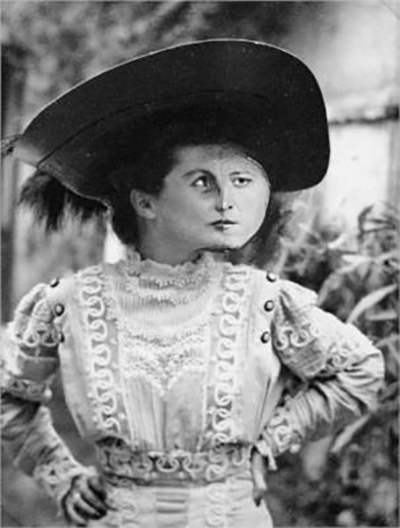
Wikipedia:
Remedios Varo Uranga (16 December 1908 – 8 October 1963) was a Spanish-Mexican para-surrealist painter and anarchist.
Born in Girona, Spain in 1908, she studied at the Real Academia de Bellas Artes de San Fernando, Madrid. She is known as one of the world famous para-surrealist artists of the 20th Century.[1] During the Spanish Civil War she fled to Paris where she was greatly influenced by the surrealist movement. She met her second husband, the French surrealist poet Benjamin Péret, in Barcelona. She was forced into exile from Paris during the German occupation of France and moved to Mexico City at the end of 1941. She died in 1963, at the height of her career, from a heart attack, in Mexico City.
She was born María de los Remedios Alicia Rodriga Varo y Uranga in Anglès, a small town in the province of Girona, Spain in 1908.[2] Her birth helped her mother get over the death of another daughter, which is the reason behind the name.[3]
Varo’s father, Rodrigo Varo y Zajalvo, was an intellectual man who had a strong influence on his daughter’s artistic development. Varo would copy the blueprints he brought home from his job in construction, and he helped her further develop her technical drawing abilities. He encouraged independent thought and supplemented her education with science and adventure books, notably the novels of Alexandre Dumas, Jules Verne, and Edgar Allan Poe. As she grew older, he provided her with text on mysticism and philosophy. Varo’s mother, Ignacia Uranga Bergareche, was born to Basque parents in Argentina. She was a devout Catholic and commended herself to the patron saint of Anglès, the Virgin of Los Remedios, promising to name her first daughter after the saint.[2][3]
Her father was a hydraulic engineer, and the family traveled the Iberian Peninsula and into North Africa.[4] To keep Remedios busy during these long trips, her father had her copy the technical drawings of his work with their straight lines, radii, and perspectives, which she reproduced faithfully. As a child, she read much with favorite authors including Jules Verne, Edgar Allan Poe, and Alexandre Dumas. She also read books about oriental philosophy and mysticism.[3] Those first few years of her life left an impression on her that would later show up in motifs like machinery, furnishing, artifacts, and Romanesque and Gothic architecture unique to Anglès.
Varo was given the basic education deemed proper for young ladies of a good upbringing at a convent school – an experience that fostered her rebellious tendencies. Varo took a critical view of religion and rejected the religious ideology of her childhood education and instead clung to the liberal and universalist ideas that her father instilled in her.[2]
I encourage you to go to the Wikipedia entry and read more of her life; she, like so many others, was caught up in the whirlwind that gathered in Europe between the World Wars but was lucky enough to escape from France after the Germans conquered it. She ended up in Mexico, and the works presented here are from that period of her life.
She does nothing to change my theory that the best of the Surrealists came from Spain…
Enjoy!

